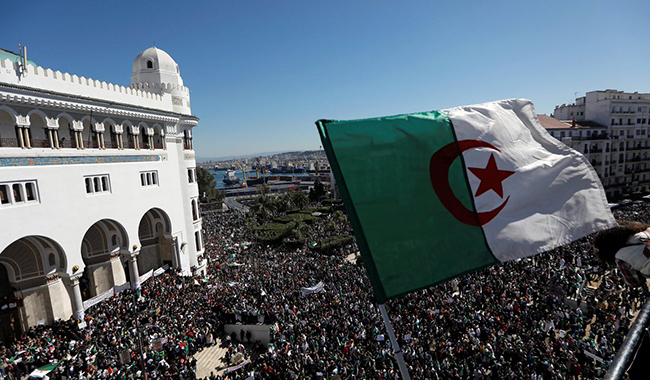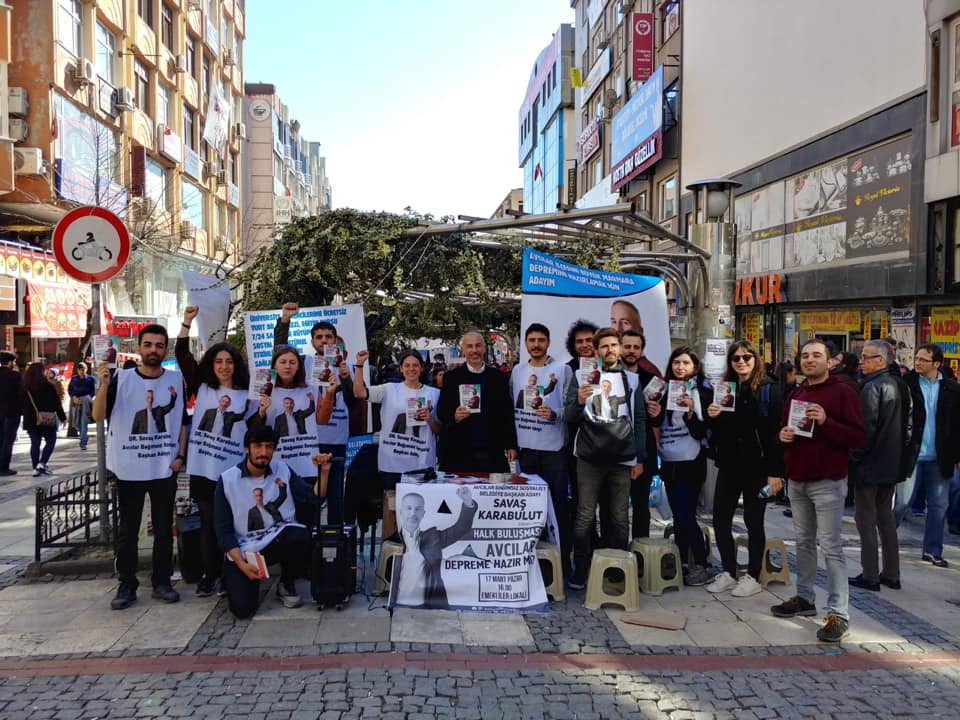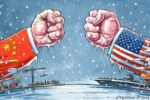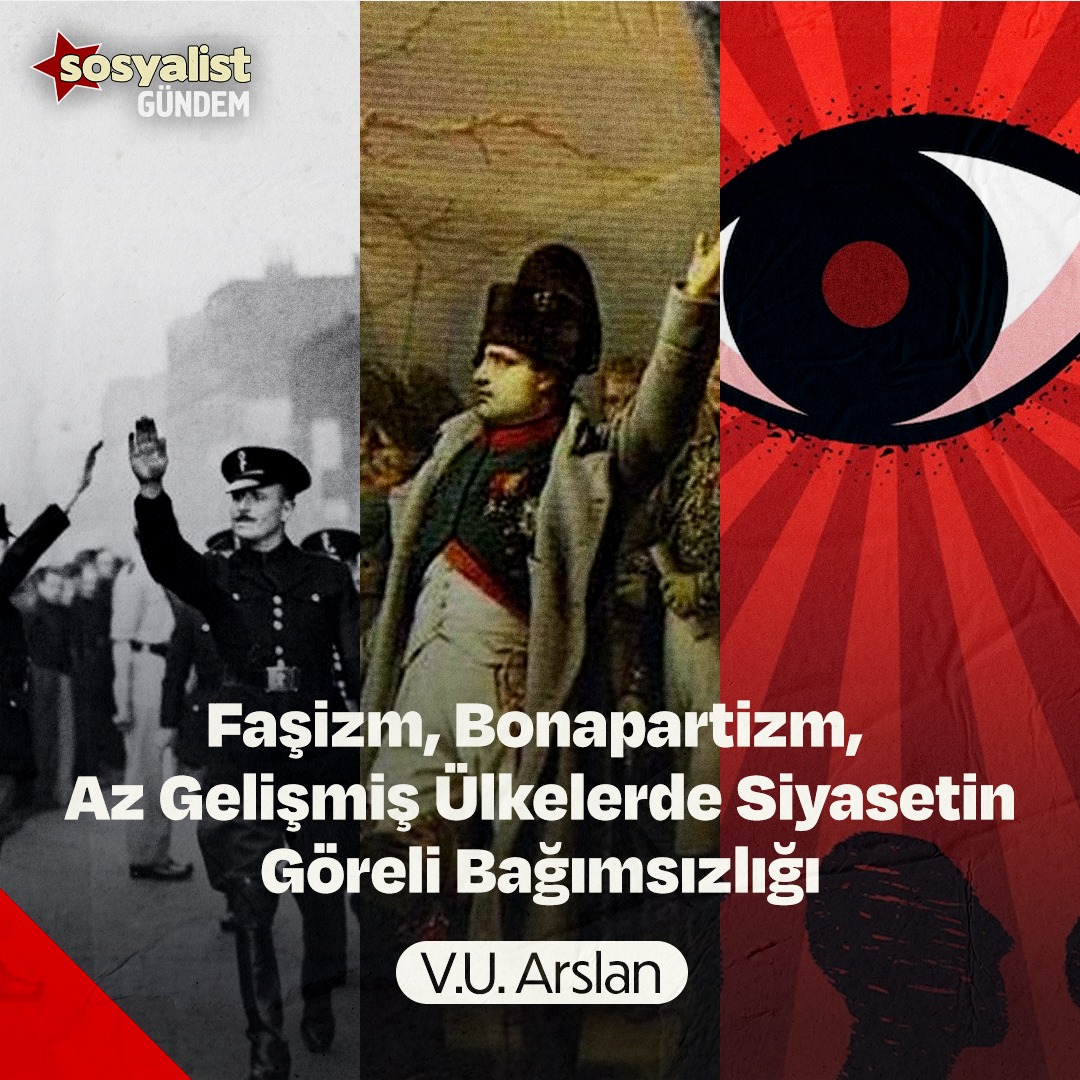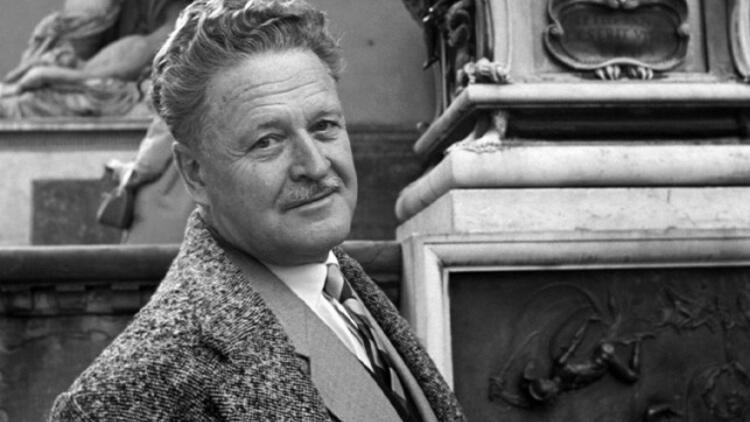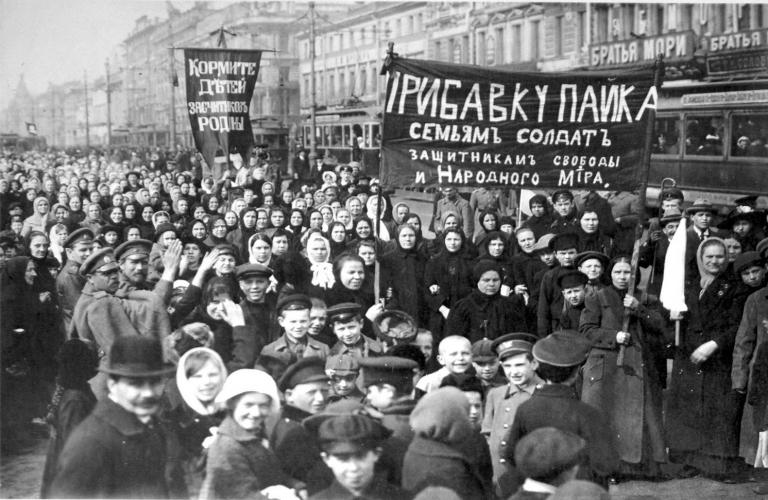- Barışa Karşı mıyız? Sürece Nasıl Yaklaşmalı? - Kasım 25, 2025
- Okur Mektubu: Eğitim Sisteminin Ötekileştirilmiş Öğretmenleri - Kasım 22, 2025
- Şili Seçimleri Sağın Güçlenişini Ortaya Koydu – V. U. Arslan - Kasım 19, 2025
“The history of Pakistan is the story of the failure of capitalism to develop a backward country.”
A Brief History of Pakistan
Pakistan was created through the partition of subcontinent by British imperialism in 1947. It was a religious partition, its bases were religious. It goes like this: the Muslims of Subcontinent – they should be living in Pakistan, the Hindus of the Subcontinent – they should be living in India. So there was a mass migration from India to the regions that were declared Pakistan and from Pakistan to the regions that were declared the new Indian state. One to 2.7 million people perished in this partition. There were massacres by fanatics, Hindu fanatics and Muslim fanatics killed women, children and anyone they could find. So a seven-thousand-year-old civilization was cut in two halves by British imperialism in 1947 and the main motive of this division was to eliminate and divide the class struggle, which was a threat not only to British Imperialism and their colonial rule but also to capitalism itself.
There was a subcontinent-wide revolution in 1946 which was started by the sailors of the Royal Indian Navy. It spread into the British forces all over the region and then it spread to the workers of the textile, railway and other sectors, to all the coastal cities of the subcontinent and then to the other cities as well. But it couldn’t be completed because of a lack of a leadership. The local bourgeoisie of the subcontinent tried to finish this revolution as soon as possible and negotiate with British Imperialism for them to leave and give us a so-called independence. So after this revolution the conservative strategists of British Imperialism decided “we cannot leave India undivided. We must divide it on a religious basis so that the class struggle can be crushed and class unity can be divided”. This was one of the major aspects of the partition.
After the partition, the important thing about the development of capitalism in Pakistan has been that the Pakistani bourgeoisie was not capable of completing any of the tasks of the bourgeois revolutions which were accomplished in Europe through revolutions like French, English and Dutch revolutions. They were not capable of industrializing, they were technically and financially very weak, culturally very backward, and they could not create a unified nation state like in Europe. Pakistan is composed of four or five nationalities. There is the Sindhi nationality, the Baloch nationality, the Pashtun nationality, the Kashmiri nationality, the Punjabi nationality and also the Seirakis, which are considered a subnationality.
They are corrupt, weak, and always needed state subsidies to survive. That is why instead of the bourgeoisie controlling the state in Pakistan, it is the other way around from the very beginning. The bourgeoisie depends on the very state for its own existence. It is the state which calls the shots and controls the bourgeoisie through the state machinery. The army is the most powerful state institution.
Another feature of capitalism in Pakistan has been its uneven and combined development. You will find backwardness and the most modern elements created by the development of capitalism together. There are motorways which are more advanced than in Europe or America and then a few meters away there is farming being done with 5000-years-old techniques. People don’t have clean water to drink but they may have gas, they may not have shoes on their feet, but they have cell phones.
This uneven and combined development has also created a very big working class in Pakistan during the last six or seven decades. Because there were high growth rates in the 1960s military regime, there was a rapid development and industrialization in Pakistan. But, because of the uneven nature of that development, and because that development could not improve the conditions of the working classes and sharpened the class conflict, there was a movement that exploded in 1968.
There was a country-wide student protest first and then the working class entered into the movement and there were general strikes and a country-wide movement which gave birth to the Pakistan Peoples Party(PPP), which was a very young party at that time -only a few months old- but it gave the movement a socialist program, while the Stalinist left limited itself to a democratic program, because they believed in the revolution by stages. They believed that first there would be a bourgeois democratic stage and then there would be a socialist stage in the revolution.
The PPP directly raised the socialist program, it had a very radical manifesto that called for the nationalization of industry, redistribution of the lands and a socialist society, so the movement leaned towards the PPP and it became the biggest party in the history of Pakistan within a few months.
But it was not a revolutionary or a Marxist party but a populist party. It was a radical, left-leaning party, so it could not complete the revolution. Instead, the revolution was diverted into the electoral arena. The PPP won the elections and came into power, but they could not make any important reforms because there was no space for reforms in the weak and backward Pakistani capitalism. They tried to carry out nationalizations, give free education and other basic facilities, but they could not because there was no space, there was no capacity in Pakistani capitalism for such reforms.
So the economic crisis aggravated, similar to what we see in Venezuela today, and when the movement retreated, the military made a coup, they came into power, imposed martial law and hung Zulfikar Ali Bhutto, who was the leader of the PPP and a point of reference of the 68-69 movement. They hanged him and started a process of Islamization and imposition of reactionary values in culture, art, society and education institutions -student unions were banned- and all this was being done with the direct help of American imperialism. Muhammad Zia-ul-Haq was their man in Pakistan because they wanted to mount a stronghold against the Saur Revolution that had erupted in neighboring Afghanistan in 1978.
After the coup there were movements against the Zia regime, but they were unsuccessful. They were crushed, many people were killed, many people were hanged, many people were lashed on the streets and the whole society was pushed backward and into the process of Islamization. The regime imposed religious fundamentalist nurseries, schools and seminaries to train young people to go and fight in Afghanistan against the leftist regime there.
After the Zia regime, there were democratic governments of the PPP, which shifted to the right and became a centre-left party by the 90s or 2000. It started the process of privatizations, so you can imagine how far to the right it had bent. The democratic regime could not give any relief to the common people and their problems: unemployment, poverty, privatizations and price hikes. So for the people there was not much difference between the democratic regime than the military regime. There was a military regime once again in 1999 which lasted until 2008 and then there were another two democratic regimes: one of the PPP and one of the Pakistan Muslim League, which is the classical bourgeois party of Pakistan.
But the conditions of working people only got worse and class differences have sharpened with time. There has been a rise of a big urban middle-class of 30 to 40 million people (in a total population of 208 million). This urban middle class, which is very reactionary, religious, conservative and you could say hypocritical in its values, has given rise to a new party in Pakistan called ‘Tehreek-e-Insaf’ in Urdu, the so-called Justice Party, which has semi-fascist and semi-nationalist tendencies. This is a very reactionary right-wing party that has now been imposed as a puppet regime by the state establishment.. It is making more privatizations and neoliberal reforms. It has entered an IMF program because the economy of Pakistan has been bankrupt since the very first day. Every few years, Pakistan has to go to the IMF because of the deficits and balance of payment crisis.
In short, the history of Pakistan is the story of the failure of capitalism to develop a backward country, to make it progress and convert it into a modern, industrialized bourgeois state. Instead, it has only worsened the problems. There are remnants of feudalism in Pakistan; not feudalism, but cultural remnants, economic remnants, like very big landholdings, but subjected to the market economy and moving toward corporate farming. So there are remnants of feudalism, there is an incomplete, and you could say a caricature of a capitalist regime with economic crisis and poverty. We believe that the only way out for Pakistan, and also India, Bangladesh, Sri Lanka and the rest of the subcontinent and third-world countries in general, is a socialist revolution which will have to fulfill the tasks of capitalist development as well as the socialist tasks, to bring societies forward in their history, to eliminate poverty, unemployment, economic crises and the social and economic evils of capitalism.
The Class Struggle Today
There has been a two party system in Pakistan for 30 or 40 years. One was the right-wing PML (Pakistan Muslim League) with its leader Shehbaz Sharif, and the other one was on the left, it was the PPP with Benazir Bhutto, the daughter of Zulfikar Ali Bhutto. But with the passing of the time, both parties, particularly the PPP, have betrayed the masses so much and so many times, that there is indifference and de-politicization in society. There is indifference towards both parties. I believe there is not a single party in Pakistan that can mobilize the masses in the streets in big numbers. People are indifferent and de-politicized at the moment because bourgeois democracy and its parties have not delivered anything to them in many decades. So there is a sense of anger and hopelessness.
In this failure of the classical right wing and the classical left wing to take society forward, to solve the basic problems of the people, there has been a rise of a third party which represents the urban middle class that has developed during the last two or three decades because of the development of neoliberal capitalism in Pakistan. It is the Tehreek-e-Insaf (PTI), which became government in 2018.
But the support of the middle class for this party is just one factor, there is another factor, which is the support of the state. The PTI government is basically a puppet regime of the deep state, which has been imposed through rigged elections. It is not a fascist phenomenon in a classical sense, it has some fascist, nationalist and conservative tendencies within it, but it is a very temporary phenomenon, it is built around a single person: the former cricketer Imran Khan, who is leading the party and is the current prime minister of Pakistan.
Since the new government has come to power, it has started a very aggressive agenda of neoliberal reforms. They are privatizing what is left of public healthcare, they are privatizing universities, they are mounting a very aggressive austerity regime. They have entered an IMF program and are wreaking havoc on common people in order to balance the macroeconomic indicators. The growth rate has fallen to 2.3% from 5.6% and, during the last few years, inflation has risen rising to 12 or 13%, interest rates are rising, they are at 14%. So there is a situation of stagflation.
There has been some resistance by the working classes, particularly in the public sector against privatization, and others against downsizing and other neoliberal reforms, but the government is also afraid of any explosion which can happen from below and give birth to a very big revolutionary movement, so they are very careful. They try to make reforms that people resist, they retreat, and after some time, they try to attack again and the people resist. Sometimes the government is successful, sometimes the people are successful. There is class struggle, but it is not very sharp. There is no big movement, there are no big strikes or protests, though there have been some isolated and spontaneous movements. But in general the reaction is dominant in Pakistan.
Another problem is that only less than 1% of the working class is organized in trade unions in Pakistan and student unions have not been allowed in universities in the last 30 years. So the students as well as the working class are not organized much in unions. On one hand, this is negative, it is an obstacle in front of the struggle for basic socio-economic rights. But on the other hand, there is a positive aspect in that there is no buffer between the state and the working class in the form of a union bureaucracy.
There are some big unions in public institutions, but only a few. There is no buffer or shock absorber which can be used to suppress a movement, so if a movement erupts in Pakistan, it would be very aggressive from the first day, it would be very explosive, it would reach very advanced conclusions from the very beginning. This is another aspect of the uneven and combined development of Pakistani capitalism that there is no mechanism such as the union bureaucracy to control the masses.
Revolutionary work has become very difficult because of rising state oppression. Recently, the remaining democratic rights are shrinking more and more. Sometimes people are arrested just for protesting against a price hike or any such a basic issue. But the working class has not been defeated in any big movement in many decades. There has been no defeat of a revolution in Pakistan for twenty or thirty years. There is a potential for a big movement to erupt and it can happen unexpectedly. That is why the government and the state are afraid, they are very careful, they are getting more oppressive and repressive. They are trying to carry through the program of neoliberal reforms very carefully and with a tight control over society.
The Influence of Religious Fundamentalism
There is a misconception about Pakistan, that Pakistan is a very religious society and that there are people with long beards all over the country and there are mullahs calling all the shots. But in reality Pakistan is not a religious society, it has never been a religious society historically.
There is a very famous incident from the 1968 movement. The leader of the Muslim brotherhood, Maulana Maududi, was addressing a crowd in Lahore, agitating against the PPP and socialist ideas, which were on the rise at that time. He said the main slogan of the PPP was “bread, clothing and housing”, so he took bread in one hand a Koran in the other, and he showed it to the people said: “What do you want? The PPP wants to give you bread, we want to give you the Koran. Do you need the bread or the Koran?” And the people said “we need bread, because we have the Koran in our homes so we can go and read it there”.
Religious fundamentalism has been very superficial and it has been imposed from above by the ruling classes and some sections of the state. For example in Pakistan there has never been a single government dominated by the religious parties. There was one government in the Pashtun province, but it was supported by the state in 2001 and the years after that. In reality, the religious parties have not been able to get more than 5% votes in the history of Pakistan. People may listen to them, but they do not vote for them. It is the stagnation of society, politics and the working class movement that paves the way for religious fundamentalism, but it is a temporary phenomenon.
When the people are unable to look forward, when they don´t have any hope in the future, they start looking backwards, in the past and phenomena of the past like religion and racism, and the politics around these reactionary ideas gain some momentum. So yes, there has been some domination of religiosity, particularly in the middle classes, which are more conservative and religious. But it is because the working class is unable to show them the way forward to the future, and when the working class does not show the middle class the way forward, the middle classes become very reactionary.
So the conception that fundamentalist are going to take over Pakistan and impose an Afghanistan-like government, is totally wrong. Society will resist, the working class will resist, the youth will resist, so there is no possibility, in the immediate future at the least.
Kashmir
Kashmir is not a homogeneous region. First there is an area that is called the Gilgit-Baltistan, it is a separate region in Kashmir. Then there is a Pakistani Kashmir, and an Indian Kashmir; there are divisions within the Indian Kashmir as well: there is The Valley, which is the epicenter of the movement right now and then there is Jammu, where there are more Hindus, and the areas of Ladakh and some areas occupied by China. So Kashmir is divided between three countries, three states: Pakistan, India and China; by international law, it is a disputed territory.
When the British partitioned the subcontinent in 1947 Kashmir was ruled by a Raja, or prince, who was Hindu, though the majority of population was Muslim. So first the Pakistani state sent its tribal militias -not the army because the army chief was an Englishman at the time and he refused to obey the orders of the the newly-formed Pakistani government- to Kashmir and occupied part of it. Then the Raja called for help from India and they also sent their forces and occupied another part of Kashmir. Then the whole matter went to the UN, and there was a cease-fire line drawn in between the two countries which is called line of control. So half of Kashmir is on this side and half of Kashmir is on the other side.
The national question exists on both sides and there have been movements of independence in since the 1980s when there was a Kashmiri intifada, just like the Palestinian intifada. There was a very big protest movement in Kashmir but because proxy groups supported by the Pakistani government intervened, the movement turned into armed struggle. Jihadi groups that were sent from Pakistan gave the Indian state the excuse to say that these people are terrorists, not freedom fighters, so it crackd down on the movement. Particularly in the Indian Kashmir, there have been tens of thousands of people who have been abducted, raped and murdered, so there is a humanitarian crisis in Kashmir.
When the Raja asked help from India, the Indian government said “OK, we will give you help against Pakistan, but you have to affiliate with us in return”. So there was an agreement in which India gave a special semi-autonomous status to Kashmir within the Indian state. But now the Hindu fundamentalist government of Narendra Modi has merged Kashmir into India, removed its autonomous status and imposed a curfew for many weeks. But when the curfew was lifted, there were mass protests, agitation and stone pelting of the Indian forces, so they imposed a curfew once again. One of the major reasons for this provocation by the Modi government is that the Indian economy is falling deeper into recession, so in order to divert attention from rising unemployment, price hikes and other economic problems of the working class and the common people, Modi has opened up this front to whip up chauvinism, religious fundamentalism and nationalist hysteria in India and a state of war with the Pakistan.
Our position on Kashmir is a socialist solution. We admit the right to self-determination and the right of separation of the Kashmiri people, but we also insist on connecting the struggle for freedom and independence with the struggle for the socialism with the wider masses of Pakistan and India in the region. We believe that Kashmir can only be free in a socialist subcontinent. As long as there are capitalist bourgeois states around it, Kashmir cannot be free in a true sense, even if they achieve freedom or the right to self-determination, it will always be a puppet state of either this state or other big bourgeois states.
The Struggle
The full name of our paper is The Class Struggle, we are known by the name of our fortnightly paper, in short, The Stuggle. The Struggle was founded in Europe, in Amsterdam, during the 1980s because many comrades had to flee from Pakistan and go into exile in Europe because they had death sentences by the Zia regime. There they started regrouping. Many were PPP workers or sympathizers, because the PPP was the symbol of the resistance to the regime and left politics in Pakistan at that time. From there, they were recruited by the CWI led by Ted Grant at the time. The comrades were revolutionaries and socialists to some extent, but they were won over to the ideas of Marxism in Europe, where the first congress of The Struggle was held in 1985.
These comrades started publishing leaflets, posters and a newspaper in Europe and smuggling them into Pakistan. When the Zia regime weakened and started giving some democratic liberties, some of those comrades came back to Pakistan and started building what was the first Trotskyist organization in the history of Pakistan.
In 1995 there was a very famous radical trade union leader in Pakistan. At that time we launched our trade union front, the Trade Union Defense Campaign, not only in Pakistan, but internationally. Our basic demand is for the minimum wage be tied to the value of gold, social security for workers, the right to retirement, pension, health care facilities and the right to unionize. And we connect these demands to the socialist program.
We have a movement of unemployed youth, whose main demand if for all the unemployed youth to be registered, they should be given employment or an unemployment allowance. Unemployment is massive in Pakistan, according to non-government reports, as much as 50% of the people can be considered unemployed. We also work in the student movement, we have recently launched the Revolutionary Students Front, whose basic demands are for student unions to be restores, for student union elections to be held, for there to be no rise in fees and for education to be free, that the education budget should be multiplied by ten and that education should not be privatized. We win students over to socialist ideas through these transitional demands.
In general, our transitional program calls for the nationalization of all big industry, key sectors of the economy, and big landholdings; all the land should be divided among the landless peasants; we call for a revolutionary constitutional assembly, which should draft a new revolutionary constitution; there should be equal rights for women in every sphere of life; minimum wage should be increased four or five times and be tied to the value of gold; all internal and external imperialist debt should be expropriated and all the banks should be nationalized; Officers should be elected by soldiers committees; and there should be a public militia for the defense of the workers´ state, instead of a standing army.
We believe that only a socialist revolution can solve the problems of the peoples of the subcontinent. And we are internationalists, we believe that the character of the socialist revolution can only be international.
SEP-ISL
This is a very pleasant, encouraging and energizing camp. In Pakistan we have Marxist schools we organize on a local level and on a national level. We have two schools annually that consist of five sessions over three days, mostly about perspectives, philosophy, political sessions, music, poetry and other activities; and on the last day we discuss the objectives and strategy of the youth work for the following months.
This camp is quite different. It is longer, there are sports, workshops and other activities, which is new for me and I think it is good for comrades to be fisically and mentally fit and creative, and that these are good initiatives. I am also listening to the sessions, and the discussion are very rich and comprehensive. Overall, this is a memorable experience for me, I have met many comrades for other parts of the world with whom we are exchanging ideas.
I believe that the ISL is a very good initiative, a very encouraging revolutionary initiative. An international organization is needed and we should also learn from the past experiences of other international organizations, their strengths, their weaknesses and mistakes. And I believe that the ISL is being built by keeping all those experiences in view. I believe that there will be more room for discussion in the ISL for differences and dissent so that we can exchange ideas, enrich them and make contributions to the ideas of Marxism according to the recent developments in the world.
For all the ISL comrades who are building revolutionary parties in their countries, my message is that your struggle is our struggle, and we believe that out struggle is your struggle. There is only one struggle, and that is the struggle for the socialist revolution. It is a struggle worth living and dying for. So there is no bigger goal in life than this historical goal. Near the end of his life, Trotsky wrote a very beautiful letter to his comrades, saying that he had no regrets, that if he were given another life, his choices wouldn´t be different. He said he was happier at that stage of his life, because when you choose a goal for your life that is bigger than your life itself, which is not individual, but collective, and for the whole of humankind, no burden can bring you down. So, march forward with the red flag, march forward with the socialist revolution, because humanity has only two options before it: socialism or barbarism.






